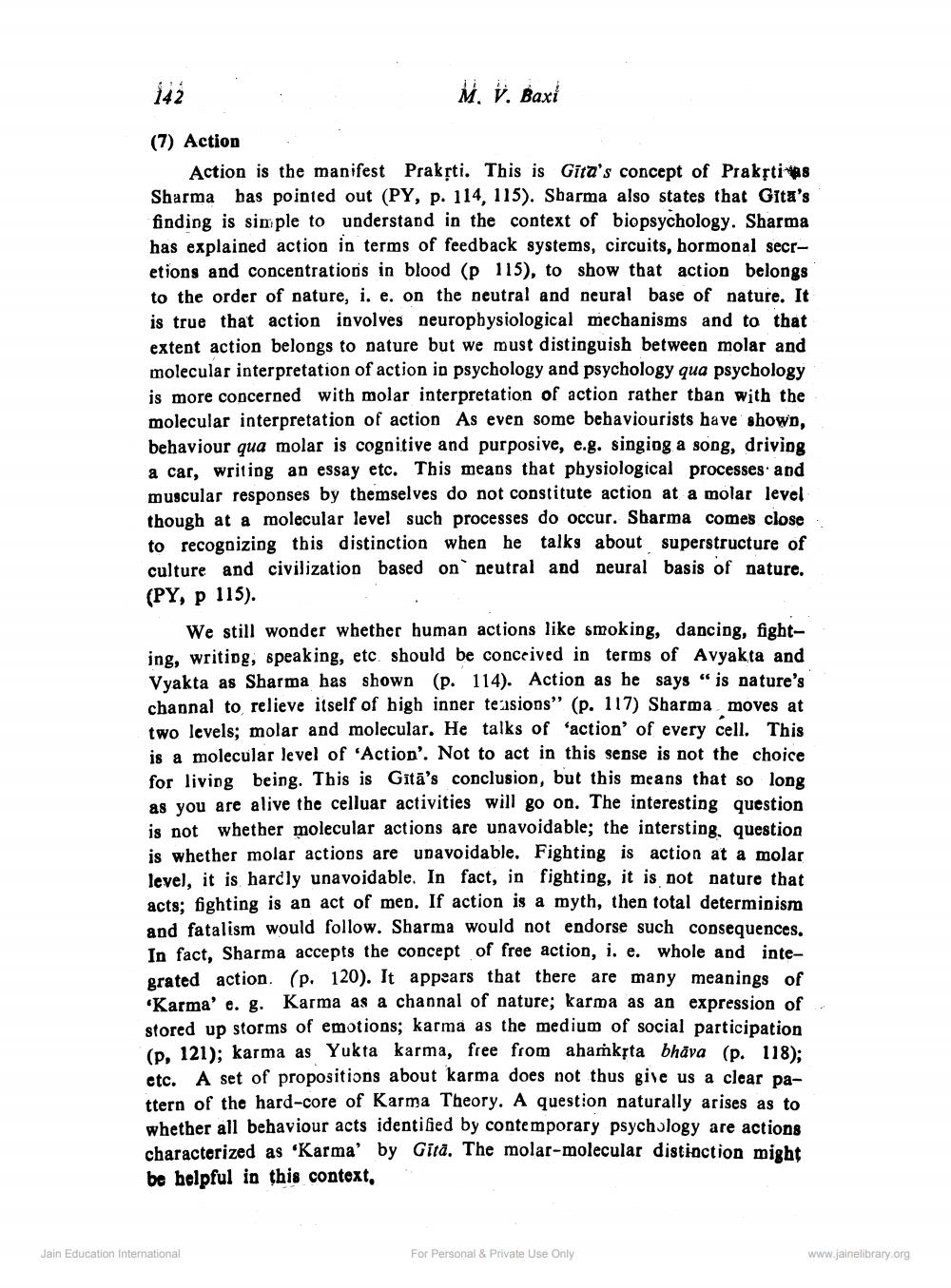________________
142
(7) Action
Action is the manifest Prakṛti. This is Gita's concept of Praktis Sharma has pointed out (PY, p. 114, 115). Sharma also states that Gita's finding is simple to understand in the context of biopsychology. Sharma has explained action in terms of feedback systems, circuits, hormonal secretions and concentrations in blood (p 115), to show that action belongs to the order of nature, i. e. on the neutral and neural base of nature. It is true that action involves neurophysiological mechanisms and to that extent action belongs to nature but we must distinguish between molar and molecular interpretation of action in psychology and psychology qua psychology is more concerned with molar interpretation of action rather than with the molecular interpretation of action As even some behaviourists have shown, behaviour qua molar is cognitive and purposive, e.g. singing a song, driving a car, writing an essay etc. This means that physiological processes and muscular responses by themselves do not constitute action at a molar level though at a molecular level such processes do occur. Sharma comes close to recognizing this distinction when he talks about superstructure of culture and civilization based on neutral and neural basis of nature. (PY, p 115).
M. V. Baxi
We still wonder whether human actions like smoking, dancing, fighting, writing, speaking, etc. should be conceived in terms of Avyakta and Vyakta as Sharma has shown (p. 114). Action as he says "is nature's channal to relieve itself of high inner tensions" (p. 117) Sharma moves at two levels; molar and molecular. He talks of 'action' of every cell. This is a molecular level of 'Action'. Not to act in this sense is not the choice for living being. This is Gita's conclusion, but this means that so long as you are alive the celluar activities will go on. The interesting question is not whether molecular actions are unavoidable; the intersting, question is whether molar actions are unavoidable. Fighting is action at a molar level, it is hardly unavoidable. In fact, in fighting, it is not nature that acts; fighting is an act of men. If action is a myth, then total determinism and fatalism would follow. Sharma would not endorse such consequences. In fact, Sharma accepts the concept of free action, i. e. whole and integrated action. (p. 120). It appears that there are many meanings of 'Karma' e. g. Karma as a channal of nature; karma as an expression of stored up storms of emotions; karma as the medium of social participation (p, 121); karma as Yukta karma, free from ahamkṛta bhava (p. 118); etc. A set of propositions about karma does not thus give us a clear pattern of the hard-core of Karma Theory. A question naturally arises as to whether all behaviour acts identified by contemporary psychology are actions characterized as 'Karma' by Gita. The molar-molecular distinction might be helpful in this context,
Jain Education International
For Personal & Private Use Only
www.jainelibrary.org




